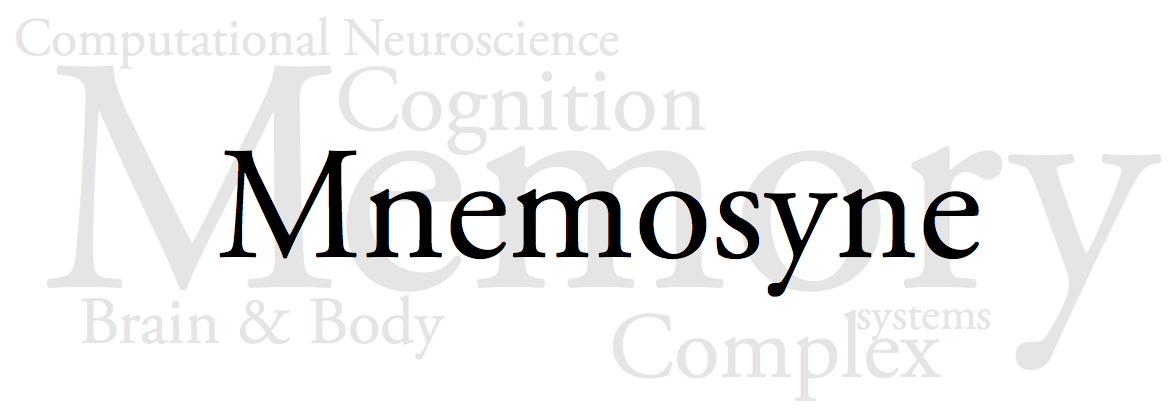


 |
 |
 |
Frederic Alexandre |
Shan Yu |
The research expertise of the Inria-CAS joint team will synergize to provide a unique leverage to address this important issue. On the Chinese side, connectionist models like deep neural networks are adapted to avoid so-called catastrophic forgetting and to facilitate context-based information processing (Zeng et al., 2019). This is done by a clever mechanism of weight modification to protect previously learned associations, and by a module learning to detect and reuse corresponding contexts to flexibly alter the Stimulus- Response association learned by the neural networks. On the French side, models in computational neuroscience explore the capacity of neuronal structures like the hippocampus to categorize contexts (Kassab & Alexandre, 2018) and investigate the role of the prefrontal cortex (Hinaut & Dominey, 2011), known to modulate behavioral activity depending on the context. We propose here to associate our experiences to develop a more general framework for adapting neural networks to problem solving, thus augmenting their usability in AI and the understanding of brain reasoning mechanisms.
A postdoc fellow, Jianyong Xue, has been hired by Inria to foster our activities, from December 2020 to September 2022.
Visio meetings are organized regularly on wednesday 9-11am CET/ 3-5pm CST for common presentations and common work. As the team had limited activities (and no visit possible), it was proposed to renew it for 2022-2024.
A French-Chinese workshop has been organized on September 14th 2021.
From end of 2023, travels have been made possible again. A first visit has been organized on December 4-8 2023, with F. Alexandre visiting CASIA in Beijing.
Guangfu Hao, PhD student at CASIA visited the Mnemosyne team from March 1st to April 26 2024.
We have co-organized the workshop “Brain, Language, and AI”, held in Xishuangbanna, Yunnan, China, during Nov. 4-6, 2024.
Jianyong Xue and Frédéric Alexandre. Multi-task learning with modular reinforcement learning. In SAB 2022 - 16th International Conference on the Simulation of Adaptive Behavior, Cergy-Pontoise, France, September 2022.
Baldassarre, G., Lord, W., Granato, G., & Santucci, V. G. (2019). An Embodied Agent Learning Affordances With Intrinsic Motivations and Solving Extrinsic Tasks With Attention and One-Step Planning. Frontiers in Neurorobotics, 13.
Blumenfeld, R. S., & Ranganath, C. (2007). Prefrontal Cortex and Long-Term Memory Encoding: An Integrative Review of Findings from Neuropsychology and Neuroimaging. Neuroscientist, 13(3), 280–291.
Dolan, R. J., & Dayan, P. (2013). Goals and Habits in the Brain. Neuron, 80(2), 312–325. https://doi.org/10.1016/j.neuron.2013.09.007
Domenech, P., & Koechlin, E. (2015). Executive control and decision-making in the prefrontal cortex. Current Opinion in Behavioral Sciences, 1, 101–106. https://doi.org/10.1016/j.cobeha.2014.10.007
Dreyfus H.L., Dreyfus S.E. (1991) Making a Mind Versus Modelling the Brain: Artificial Intelligence Back at the Branchpoint. In: Negrotti M. (eds) Understanding the Artificial: On the Future Shape of Artificial Intelligence. Artificial Intelligence and Society. Springer, London.
Drumond, T. F., Viéville, T., & Alexandre, F. (2019). Bio-inspired Analysis of Deep Learning on Not-So-Big Data Using Data-Prototypes. Frontiers in Computational Neuroscience, 12.
Hinaut, X., & Dominey, P. F. (2011). A Three-Layered Model of Primate Prefrontal Cortex Encodes Identity and Abstract Categorical Structure of Behavioral Sequences. Journal of Physiology-Paris.
Hu G, Huang X, Jiang T, Yu S. (2019) Multi-Scale Expressions of One Optimal State Regulated by Dopamine in the Prefrontal Cortex. Frontiers in Physiology 10, 113
Hu G, Cui B, Yu S. (2019) Skeleton-based action recognition with synchronous local and non-local spatio-temporal learning and frequency attention. IEEE International Conference on Multimedia and Expo (ICME), 1216-1221
Kassab, R., & Alexandre, F. (2018). Pattern separation in the hippocampus: Distinct circuits under different conditions. Brain Structure and Function.
Nallapu, B.T., Alexandre, F. (2018). Cognitive Architecture and Software Environment for the Design and Experimentation of Survival Behaviors in Artificial Agents, in "IJCCI 2018 - 10th International Joint Conference on Computational Intelligence", Seville, Spain.
O’Reilly, R. C., Noelle, D. C., Braver, T. S., & Cohen, J. D. (2002). Prefrontal cortex and dynamic categorization tasks: Representational organization and neuromodulatory control. Cereb Cortex, 12(3), 246–257.
Strock, A., Hinaut, X., & Rougier, N. P. (2019). A Robust Model of Gated Working Memory. BioRxiv, 589564.
Sun, R. & Alexandre, F., eds. (2013) Connectionist-Symbolic Integration : from Unified to Hybrid Approaches. Taylor and Francis.
Sutton, R. (1990) Integrated architectures for learning, planning, and reacting based on approximating dynamic programming. In Proceedings of the Seventh International Conference on Machine Learning, Austin, TX. Morgan Kaufmann.
Zeng, G., Chen, Y., Cui, B., & Yu, S. (2019). Continual learning of context-dependent processing in neural networks. Nature Machine Intelligence, 1(8), 364–372.
Zeng G, Huang X, Jiang T, Yu S. (2019) Short-term synaptic plasticity expands the operational range of long-term synaptic changes in neural networks. Neural Networks 118, 140-147